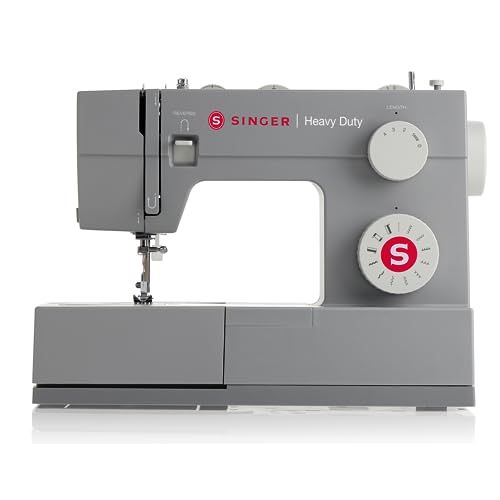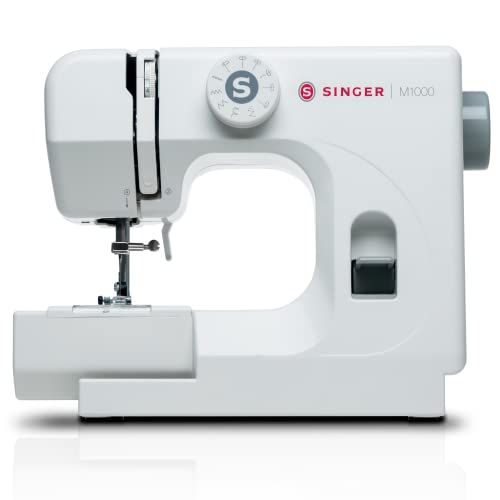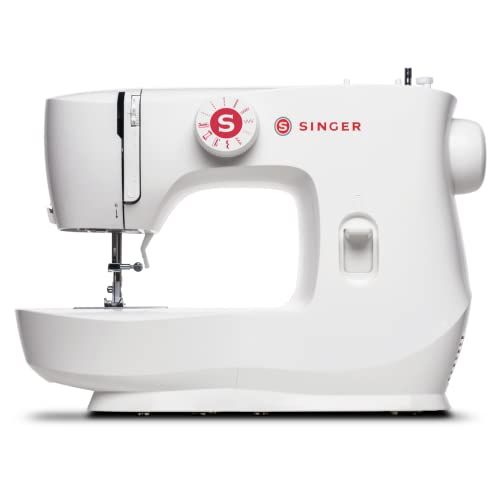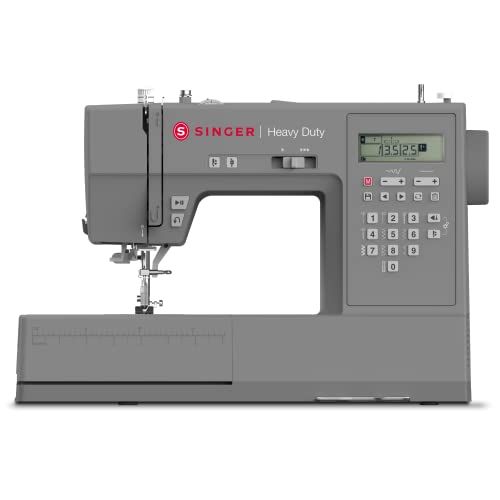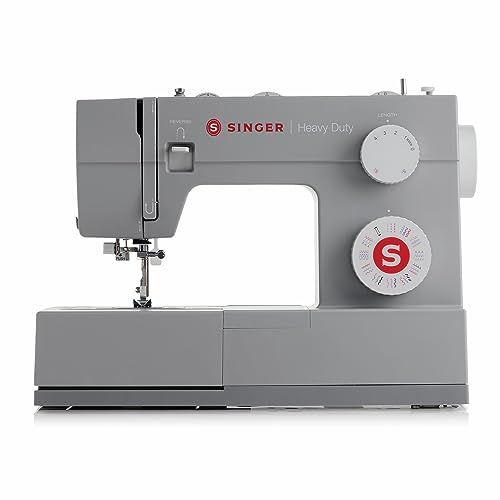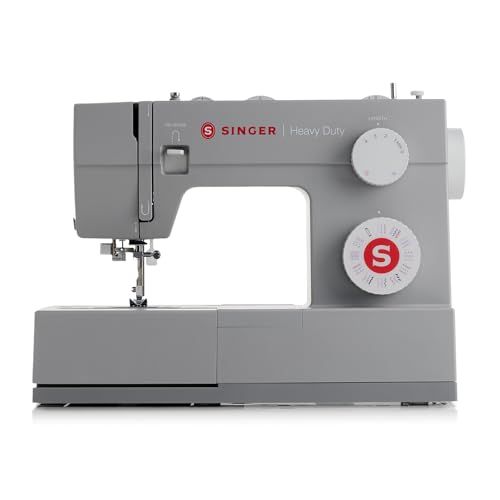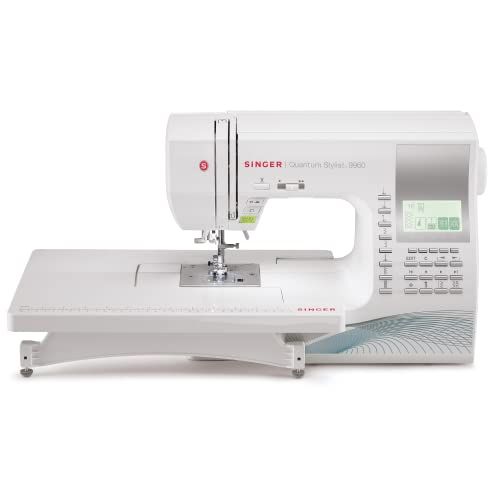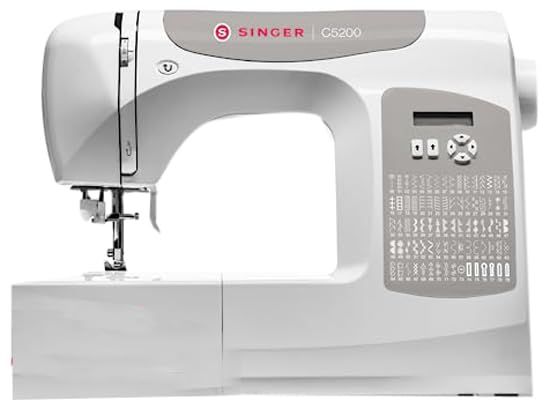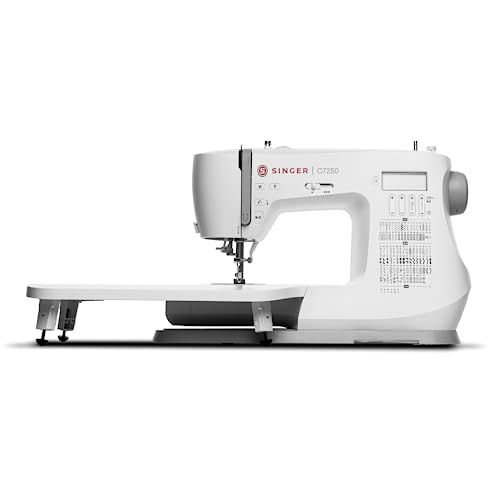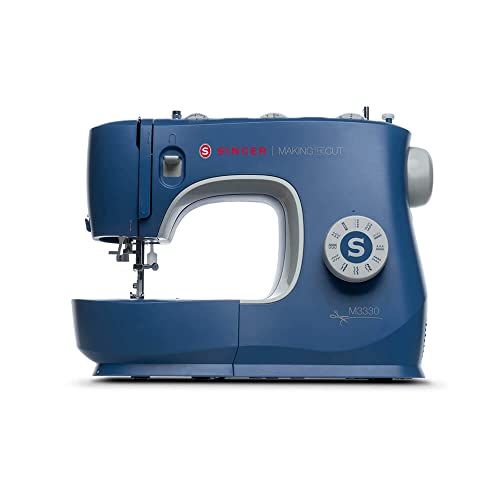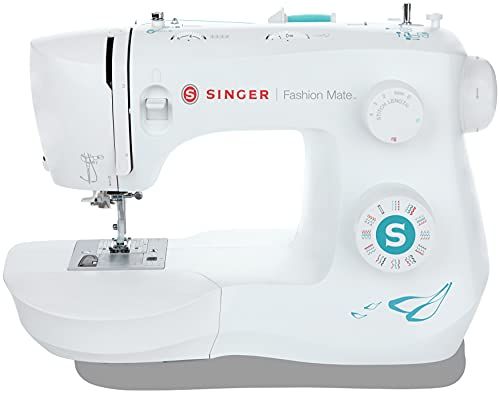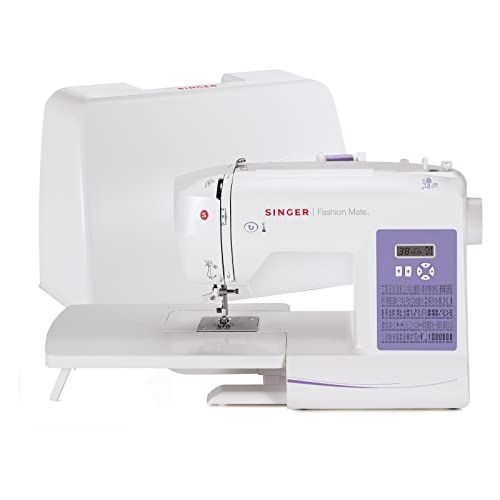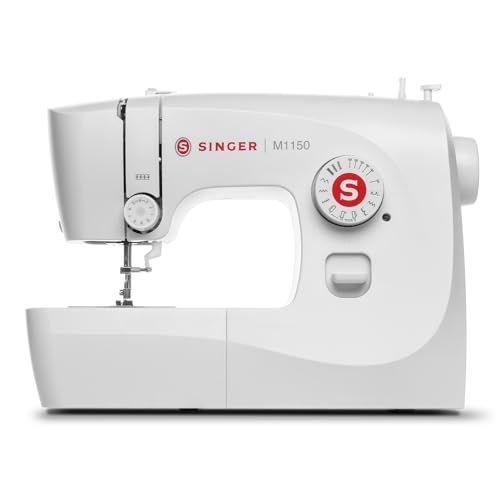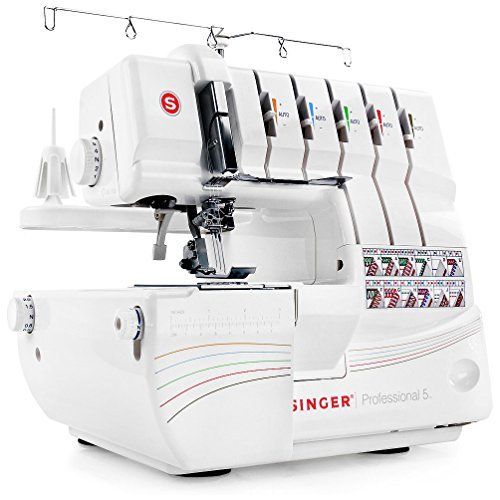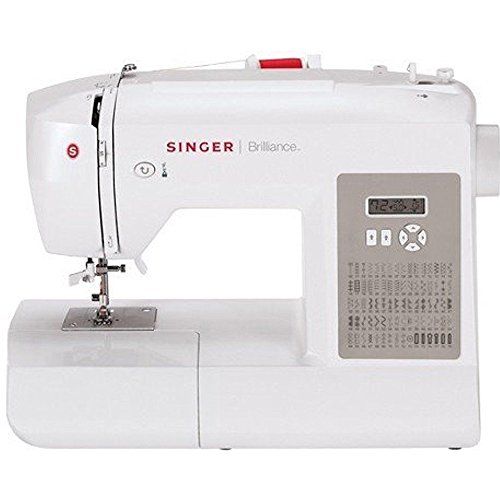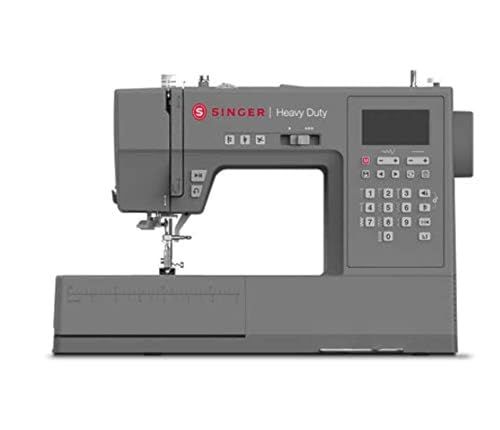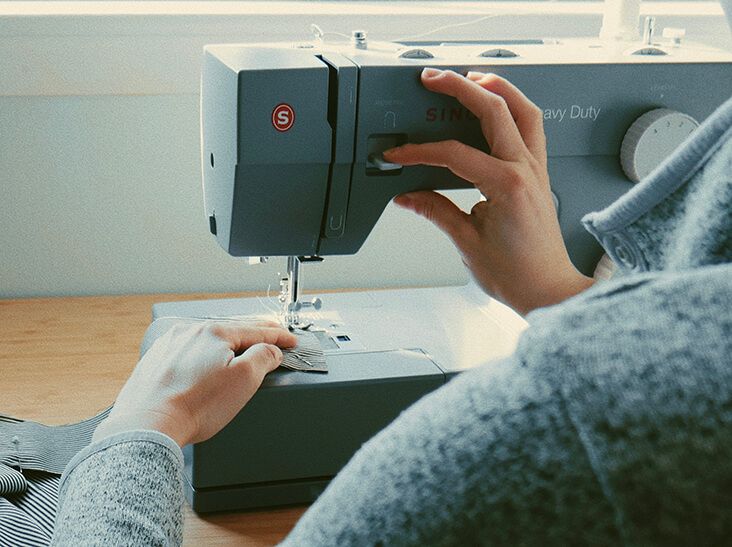
Singer is one of the most iconic and recognizable brands in sewing machines. Founded in 1851 by Isaac Merritt Singer, the company helped revolutionize home sewing by making the first practical, affordable, and versatile sewing machine for domestic use.
Singer's innovative design made sewing faster, easier and more accessible. Key features like the foot treadle and straight needle allowed continuous stitching without manual labor. The introduction of the Singer Model 12 in the 1850s brought interchangeable decorative discs that let home sewers embellish with various stitch patterns. Later innovations like the use of electricity in motors and the development of zig-zag stitches further expanded the creative possibilities for home dressmaking and crafting.
With its strong patent protection and savvy marketing, Singer rapidly grew into an international corporation by the early 1900s. The brand became practically synonymous with home sewing machines. Generations of sewists learned on Singer models like the 15-91, 201, 301, and 66. The company also led in production, making over 2 million machines per year at its peak. Though no longer the dominant force it once was, Singer remains one of the most trusted and iconic brands for all types of sewing.
Singer Sewing Machine Models
Singer offers a range of sewing machine models to suit all skill levels and budgets:
Entry-Level Models
The entry-level Singer sewing machines are ideal for beginners or occasional sewers. They have basic built-in stitches and easy operation. Some popular entry-level models include:
Simple - Affordable basic model with 6 built-in stitches. Easy turn dial operation. Good for learning sewing fundamentals.
Tradition - Features 23 built-in stitches including basic, stretch, decorative, and buttonhole stitches. Top drop-in bobbin and automatic needle threader.
Start - Lightweight model with 6 built-in stitches. Top drop-in bobbin and easy threading. Good for simple projects.
Mid-Range Models
The mid-range Singer sewing machines add more features for intermediate sewers. They have options like automatic buttonholes, adjustable stitch length/width, and specialty stitches. Some popular mid-range models are:
Confidence - Computerized model with 74 built-in stitches, automatic needle threader and easy threading system. LCD screen shows selected stitch settings.
Quantum Stylist - Computerized model with 600 built-in stitches, 13 fully automatic 1-step buttonholes, and adjustable stitch length/width. Automatic needle threader.
Talent - Computerized model with 3D editing capabilities, 185 built-in stitches, automatic buttonhole, and adjustable stitch length/width. Automatic needle threader.
High-End Models
The high-end Singer sewing machines are feature-rich for experienced sewers. They may have an expanded workspace, specialty feet, and advanced stitch editing capabilities. Some popular high-end models include:
Heavy Duty - All metal internal frame. 1,100 built-in stitches, automatic buttonhole, and adjustable stitch length/width. Heavy duty motor can sew through multiple layers.
Quantum Stylist 9960 - Computerized model with 600 built-in stitches, 5 alphanumeric fonts, and 13 fully automatic 1-step buttonholes. Mirror imaging and stitch elongation functions. Automatic needle threader.
Sewing Assistant - App-connected sewing machine with tutorials, troubleshooting, and project recommendations. Features 97 built-in stitches, 6 automatic 1-step buttonholes, and adjustable stitch length/width.
Singer Sewing Machine Uses
Singer sewing machines are versatile tools that can be used for a wide variety of sewing and crafting projects. Here are some of the main uses and projects that Singer machines are ideal for:
Garment Construction
Singer sewing machines are excellent for constructing all types of garments, from delicate fabrics like silk to heavy-duty materials like denim. Many of their computerized and mechanical models include a wide variety of built-in stitches that are perfect for sewing seams, hems, buttonholes, and more on any type of clothing. The heavy-duty machines like the Singer Heavy Duty 4411 are ideal for frequently sewing thick fabrics.
Crafting
From home decor items like pillows and curtains to accessories like tote bags and hair scrunchies, Singer machines can handle all types of crafting projects. The portable and lightweight machines like the Singer Start 1304 are convenient to use for crafting. The computerized machines that include decorative stitches are great for adding unique details and embellishments to handmade crafts.
Quilting
With their sturdy construction and built-in stitch options like quilting and applique stitches, Singer sewing machines are frequently used for piecing together quilts. The large work area found on models like the Singer Quantum Stylist 9960 allows plenty of room for managing and guiding large quilts. The machine's heavy-duty motor powers through thick quilt layers easily.
Home Décor
You can create custom home décor like throw pillows, table runners, curtains, and more with ease using a Singer sewing machine. The wide range of available presser feet provide the ability to create decorative edges like piping and ruffles. Sturdy Singer models can handle heavy home decor fabrics like canvas, denim, and corduroy.
Mending/Alterations
For basic mending needs on garments and home decor items, Singer sewing machines get the job done quickly. Simply load up the item and use a straight stitch to mend torn seams and holes. The machines can also handle more complex alterations like hemming pants, taking in garments, and replacing zippers.
With the huge variety of Singer sewing machine models available today, there's a perfect match for any sewing or crafting need. Consider what materials you'll be working with most frequently and what types of projects you want to create to determine which Singer will suit you best.
Singer Sewing Machine Features
Singer sewing machines are known for offering a wide range of useful features to make sewing easier and expand your creative possibilities. Here are some of the most common and innovative features found on Singer models:
Stitch Selection - Most Singer machines allow you to select from a variety of utility and decorative stitches, like straight, zigzag, stretch, and buttonhole stitches. Higher-end computerized Singers offer 100+ built-in stitches.
Automatic Buttonholer - Singer's automated 1-step buttonhole function creates perfect, evenly sized buttonholes with just the press of a button.
Needle Positions - Adjustable needle position lets you easily sew precise topstitching, add zippers, and more.
Speed Control - Singer machines have adjustable sewing speed so you can sew slowly for tricky techniques or zip through straight lines.
Free Arm - A free arm allows circular sewing and access to cuffs and pant hems. Most Singers have this feature.
Drop Feed Dogs - Lowering the feed dogs gives you free-motion control for quilting, darning, and embroidery.
Automatic Thread Cutter - With the touch of a button, an automated thread cutter snips top and bobbin threads and pulls thread ends to the back.
Automatic Threading - Singer's advanced easy threading eliminates frustration and lets you thread the entire machine, top and bobbin, with just the push of a lever or button.
LED Lighting - Bright LED lights illuminate the sewing area for precision work.
LCD Screen - Computerized Singers have full-color LCD touchscreens that make selecting stitches, adjusting settings, and editing designs intuitive.
With innovative features like these, Singer aims to simplify sewing and unleash creativity. Singer's features range from essentials for beginners to advanced options for experts.
Singer Sewing Machine Attachments
Singer sewing machines come with a variety of useful attachments and accessories that expand the functionality and versatility of the machines. Some of the most popular and beneficial Singer attachments include:
Presser Feet
Zipper foot - This presser foot has a narrow shape that allows you to sew very close to the teeth of a zipper. It makes inserting zippers smooth and easy.
Buttonhole foot - This foot has a space in the front to allow room for the buttonhole stitching. It ensures straight, evenly spaced buttonholes.
Blind hem foot - Designed to help you make invisible hems, this foot has a metal guide that follows the hem's edge.
Rolled hem foot - Great for making delicate narrow hems, this foot curves the fabric's edge under as you sew.
Walking foot - This foot has feed dogs that keep layers of fabric feeding evenly. It prevents shifting of fabric when sewing tricky materials.
Hemming Feet
Hemmer foot - This attachment pre-folds fabric and encloses the raw edge in a narrow hem as you sew. It makes hemming fast and easy.
Bias binder foot - This foot folds bias tape around edges and encloses them neatly as you sew. It streamlines binding edges with pre-made bias tape.
Other Useful Attachments
Ruffler foot - This foot evenly gathers and ruffles fabric as you sew for adding fullness and flair.
Cording foot - This foot has a tunnel on the underside that allows cording to be inserted into seams for decorative details.
Quilting guide - This attachment is a movable guide bar that helps you sew precise evenly spaced rows when quilting.
Using Singer attachments allows you to expand your sewing skills and tackle a wider variety of sewing projects with ease. The right attachments make sewing tricky things like zippers, buttonholes, and hems a breeze.
Singer Sewing Machine Maintenance
Proper maintenance is key to keeping your Singer sewing machine running smoothly for years to come. Here are some tips:
Cleaning and Oiling
Use a small brush or air duster to remove lint and threads from the bobbin area, feed dogs, and other moving parts. This will prevent buildup and allow the parts to move freely.
Put a few drops of sewing machine oil on the points recommended in your manual. This includes places like the needle bar, bobbin case, and shuttle. Avoid over-oiling.
Wipe away any excess oil with a soft cloth. Built-up oil can attract more lint and dust.
Cover your machine when not in use to limit dust exposure.
Replacing Parts
Several parts may need periodic replacement, especially with heavy use:
Needles - Replace bent, dull, or damaged needles right away. Use the right type and size needle for your fabric.
Bobbins - Inspect plastic bobbins for cracks and replace if needed.
Foot Pedal - If the pedal becomes noisy or sticks, replace it.
Belts - Belts can become stretched or cracked over time. Refer to your manual on belt replacement.
Service and Parts
If you need service beyond routine maintenance, any Singer authorized service center can help. Or you can contact Singer directly online, by phone or mail.
For DIY repairs, Singer parts like bobbin cases, foot pedals, and replacement belts are widely available online and at sewing/craft stores. Always search using your exact model number to get the right parts.
Singer Sewing Machine Troubleshooting
Singer sewing machines are known for their reliability and ease of use. However, like any mechanical device, problems can occasionally arise. Here are some of the most common Singer sewing machine issues and tips for troubleshooting them:
Thread Jams
Thread jams occur when the thread gets stuck in the machine's mechanisms. This can happen for several reasons:
Thread is not threaded properly - go back through the machine's threading guides carefully to ensure it is following the right path. Refer to your manual.
Lint buildup in bobbin area - clean lint out with a small brush.
Needle is installed incorrectly - make sure needle is at its highest position, loosen clamp screw, insert correctly and tighten.
If the jam persists, turn the handwheel slowly while gently guiding the thread until the jam releases.
Skipped Stitches
Skipped stitches show up as small gaps in the stitching line. This can be caused by:
Wrong needle size - double check your needle suits the thread and fabric type.
Bent or damaged needle - replace needle.
Lint blocking needle - clean lint from bobbin area.
Loose needle clamp - securely tighten needle clamp screw.
Tension Issues
Proper thread tension helps create even, straight stitching. Adjust the tension if you see:
Loose top threading - turn top tension knob clockwise.
Tight top threading - turn top tension knob counter-clockwise.
Loose bobbin threading - make sure bobbin is threaded correctly and case is snapped in tightly.
Test tension on scrap fabric before sewing your project. Refer to manual for proper tension settings.
Carefully going through these troubleshooting tips will help get your Singer sewing machine running smoothly again. Always start by re-threading completely, changing the needle, and cleaning lint. If problems persist, consult your manual or a sewing machine repair professional. With proper care, your Singer machine will deliver many years of reliable service.
Singer Sewing Machine Tips for Beginners
Using a Singer sewing machine for the first time can seem daunting, but with a few tips you'll be stitching up projects in no time. Here's a quick start guide to get you going:
Threading the Machine
Make sure to follow the threading diagram on the machine. Go slow and double check each step.
Always thread the machine with the presser foot up. This opens the tension discs that the thread needs to slip between.
Hold the thread tail about 6 inches from the spool when starting to thread. Don't let go of the tail until the needle is threaded.
Choosing Fabric
Start with medium weight cotton fabrics like quilting cotton. Avoid very lightweight or very heavyweight fabrics at first.
Use high quality thread that matches the color of your fabric. Polyester thread works for most fabrics.
Use a new needle suited for your fabric type. Change the needle often.
Stitching Seams
Set the stitch length to 2.5-3 and use a straight stitch for seams. Backstitch at the start and end.
Pin pieces together and stitch with the fabric edges lined up with the 1/4" seam guide on the needle plate.
Press seams open or to one side for a neat finish.
Finishing Seams
Zigzag stitch over raw edges to prevent fraying. Trim close to the zigzag for exposed seams.
For enclosed seams, trim close then overcast stitch the edges.
To reduce bulk, grade or notch seam allowances.
With some practice getting comfortable with the basics, you'll be ready to tackle more advanced projects! Don't get discouraged with mistakes at first - sewing skills improve over time.
Buying a Singer Sewing Machine
When it comes time to buy a Singer sewing machine, there are a few key factors to consider:
Budget
Singer offers sewing machines at various price points to meet different needs and budgets. Basic mechanical models start under $100, while computerized machines range from $200 to over $1000. Determine your budget and look for a Singer model with features that fit your needs and price range.
Features
Think about how you plan to use your Singer machine. Will you be sewing clothing, crafts, home décor or special projects? Singer has models for sewing, quilting, embroidery, garment construction and more. Choose a machine with capabilities to handle your sewing plans. Popular features include automatic needle threaders, top drop-in bobbins, adjustable stitch length and width, buttonholes and built-in stitches.
Longevity
Opt for a Singer machine built to last. Metal frames hold up better than plastic. Look for all-metal working parts inside. Singer machines with 60-100+ built-in stitches and automatic features will remain useful as your skills progress. A 25-year limited warranty provides peace of mind for machines made to withstand years of use.
Where to Buy
Singer sewing machines are sold at craft/fabric stores like Jo-Ann and Michaels as well as big box retailers like Walmart and Target. For the widest selection, visit an authorized Singer dealer. Many offer sewing classes and provide service for Singer machines. You can also buy directly from Singer online. Compare models and prices before deciding where to purchase your Singer sewing machine.
Conclusion
Singer has established itself as one of the most recognizable and trusted brands in sewing machines. There are several key reasons why Singer continues to be a top choice for sewists:
Reliability: Singer machines are known for their consistent stitch quality and long-lasting durability. Many Singer machines stay in working order for decades.
User-friendly features: Singer sewing machines incorporate features that make sewing accessible to beginners, like easy thread paths, top drop-in bobbins, and adjustable stitch length and width. Many models have automatic needle threaders too.
Wide range of machines: From basic mechanical models to computerized machines packed with high-tech features, Singer has options for sewists at every skill level.
Good value: Singer machines are very competitively priced, especially at the entry-level. You can get a capable starter machine for under $150. Even Singer's more advanced computerized machines are affordable compared to other brands.
Excellent accessories: Singer machines come with a selection of useful accessories like extra feet, needles, bobbins, seam rippers, etc. This adds functionality right out of the box.
Strong consumer ratings: Singer machines consistently receive positive reviews and recommendations from sewists. The brand has earned a reputation for delivering on performance and ease of use.
If you're looking for a user-friendly, feature-rich, and wallet-friendly sewing machine, Singer remains a leading brand to consider. From beginners learning to sew to experienced sewists tackling complex projects, Singer has a model to suit your needs.
SINGER Sewing Machines comparison
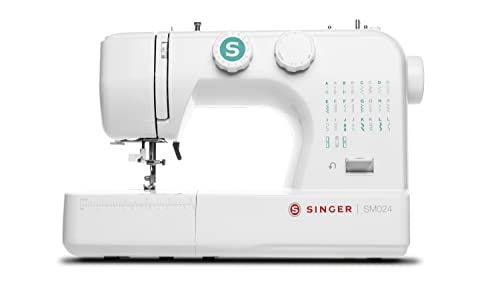 | 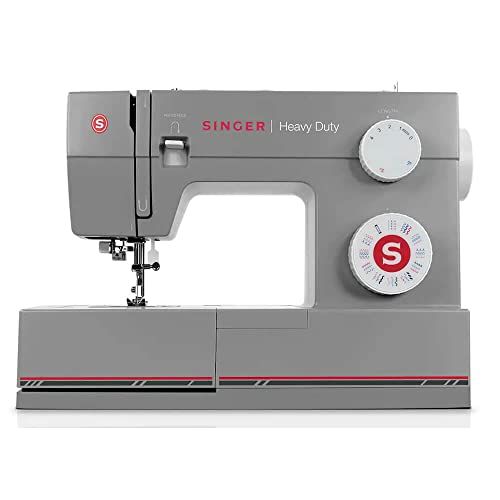 | 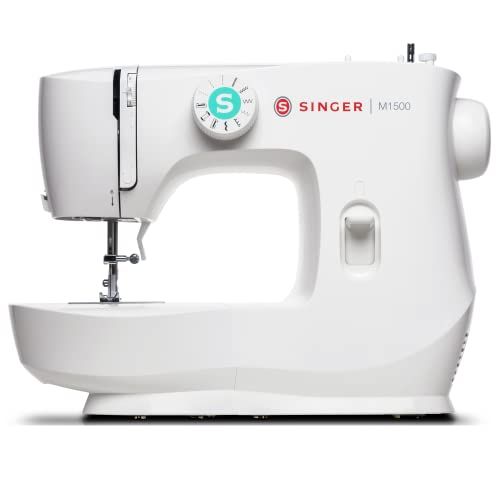 | 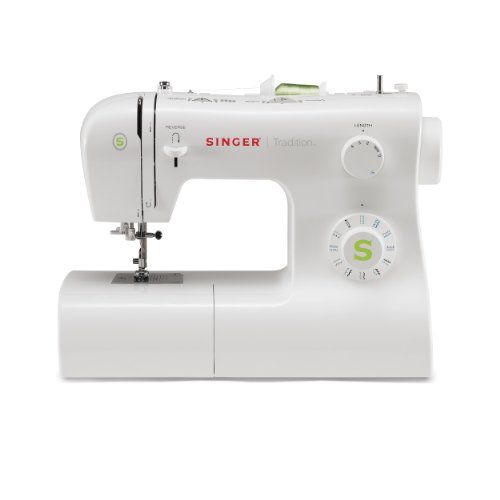 | 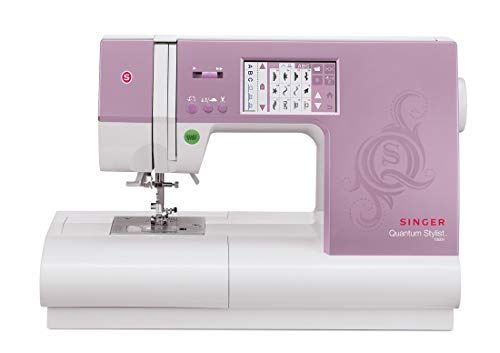 | |
|---|---|---|---|---|---|
| Model | SINGER SM024: Sewing Machine | SINGER 64SFR: Heavy Duty Sewing Machine | SINGER M1500: Mechanical Sewing Machine | SINGER Tradition 2277: Sewing Machine | Singer Quantum Stylist 9985: Computerized Portable Sewing Machine |
| Brand | SINGER | SINGER | SINGER | SINGER | SINGER |
| Color | Turquoise | - | White | White | White |
| Country of Origin | - | - | - | - | Taiwan |
| Item Model Number | SM024 | 64SFR 64S | M1500 | 2277 | 9985 |
| Item Weight | 12.79 pounds | - | 12.12 pounds | 13.6 pounds | 20 pounds |
| Manufacturer | SINGER | - | SINGER | Singer | Singer Sewing Co. |
| Is Electric | - | Yes | - | - | - |
| Material: Plastic/Metal | - | - | Item Weight 12.1 Pounds | - | - |
| Product Dimensions | 6.7"D x 13.4"W x 11.8"H | - | 7"D x 13"W x 11.5"H | 6.25"D x 15"W x 12"H | 8.5"D x 17.25"W x 12.5"H |
FAQ
What is SINGER known for?
SINGER is known for manufacturing sewing machines for both home and industrial use. Founded in 1851, SINGER pioneered the manufacturing of practical, affordable, and versatile sewing machines. SINGER is famous for introducing the first electronic sewing machine in 1948.
What are some of SINGER's popular home sewing machine models?
Some of SINGER's most popular home sewing machines include the Heavy Duty 4411, Simple 3232, Tradition 2277, Quantum Stylist 9960, and Talent 3323. These machines are loved for their ease of use, built-in stitches, automatic features, and affordability.
What types of stitches can SINGER sewing machines do?
SINGER sewing machines can handle basic stitches like straight stitch and zigzag to more advanced stitches like buttonholes, stretch stitches, decorative stitches, satin stitches, blind hem stitches, and cross stitches. High-end computerized SINGER models offer hundreds of built-in stitches.
Are SINGER sewing machines beginner-friendly?
Yes, many SINGER sewing machine models are designed for beginners. They have easy thread paths, automatic needle threaders, easy bobbin winding, adjustable stitch length and width, snap-on presser feet, and built-in stitches. The instruction manuals are beginner-friendly.
What safety features do SINGER sewing machines have?
Top SINGER sewing machines come with safety features like locking stitch button to prevent accidental stitch adjustment, automatic needle threader to avoid eye injuries, drop feed for free-motion sewing, and a clear plastic guard to keep fingers away from the needle.
Can you sew heavy materials like denim with a SINGER sewing machine?
Most computerized SINGER sewing machines can easily sew heavy fabrics like denim, canvas, quilts with their strong motor and ability to handle thick layers. Mechanical machines like the Heavy Duty 4411 are purpose-built for sewing heavy fabrics.
What warranty do SINGER sewing machines come with?
SINGER sewing machines for home use come with 10-25 years limited warranty while industrial machines have 1-5 years warranty. This covers manufacturer defects. Extended warranty plans are also available for purchase.
Where can you buy SINGER sewing machines and accessories?
SINGER sewing machines are available on the company website Singer.com, Amazon, Walmart, craft stores like Jo-Ann, authorized SINGER dealers, and independent sewing machine stores. Accessories are available both online and offline.
Does SINGER offer sewing classes for beginners?
Yes, SINGER provides free introductory sewing classes through local dealers and retailers. The company also offers online sewing tutorials, project ideas, and troubleshooting guides for beginners. Some locations have paid intermediate and advanced classes too.
How can you get a SINGER sewing machine serviced or repaired?
You can get your SINGER machine serviced at authorized SINGER dealers. Visit the SINGER website to find service centers near you. You can also call SINGER customer service or email them for repair assistance. Some retailers also provide repair services for SINGER machines sold through them.
